Mother Nature’s spectacles you can only see in America
America’s astounding Mother Nature
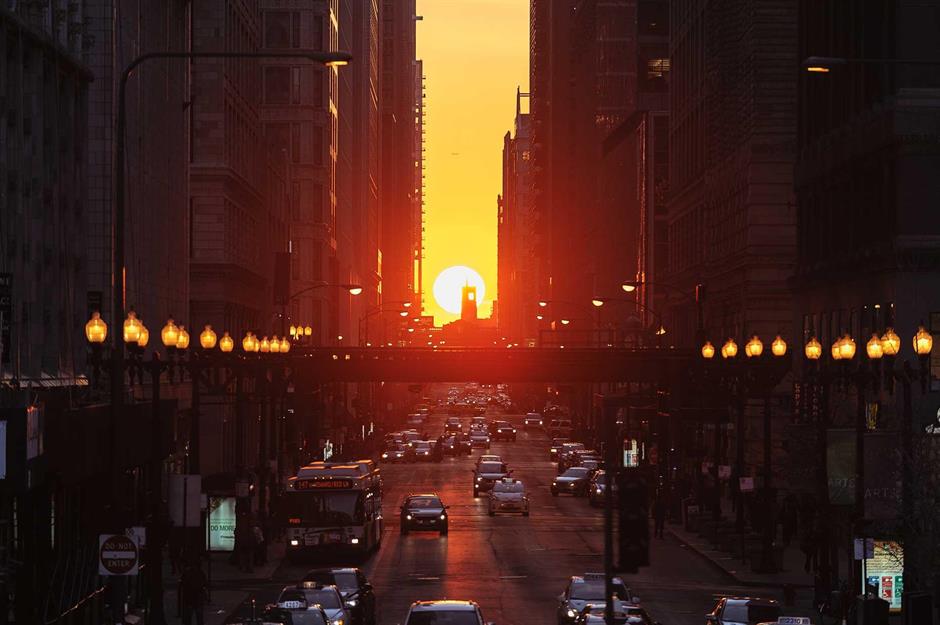
Migration of the monarch butterflies, across the US
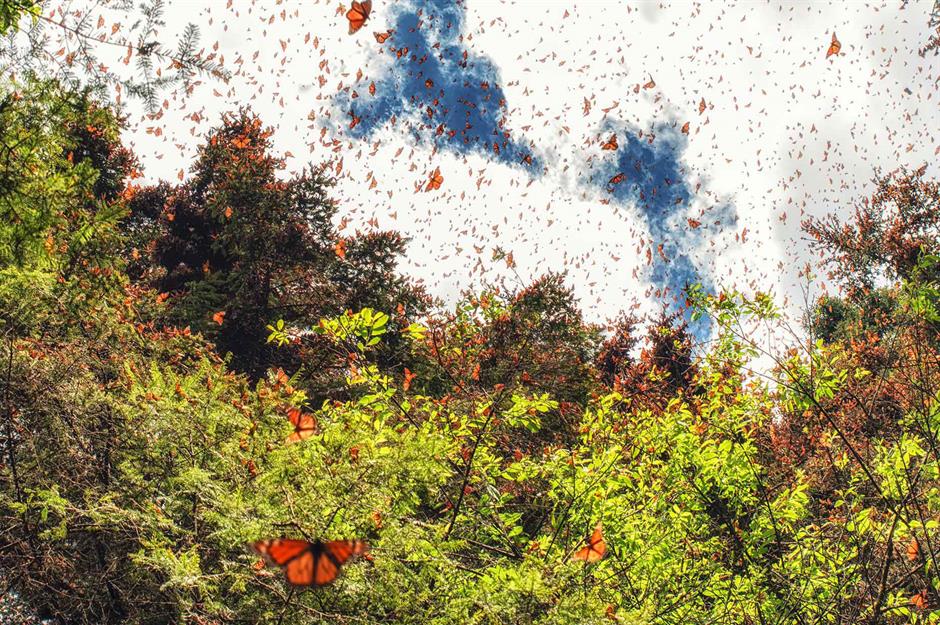
Fly Geyser eruptions, Nevada
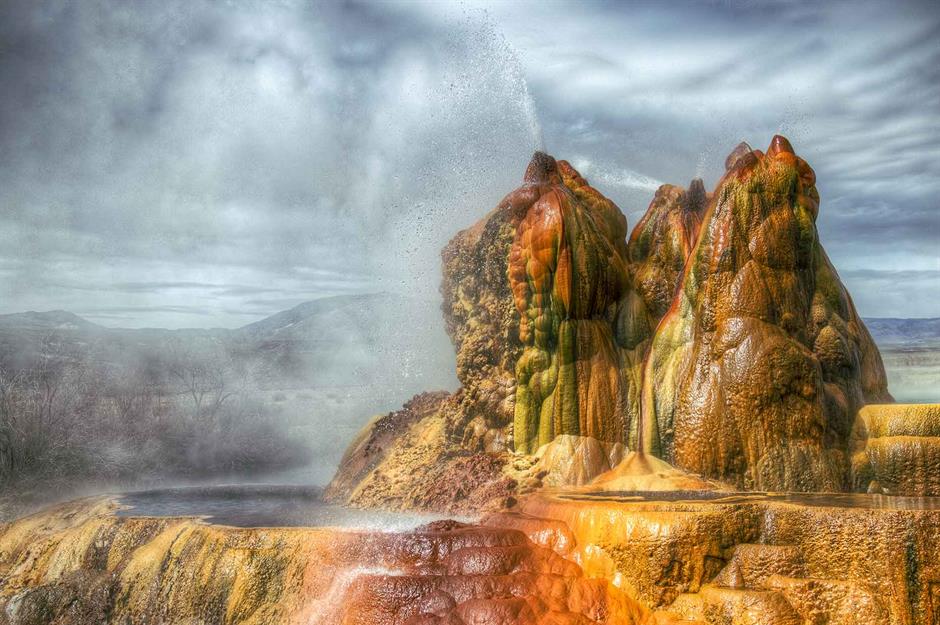
Nevada’s Fly Geyser is an accidental natural wonder. After initial attempts to dig a well were abandoned in the early 20th century, scalding hot water proceeded (and has continued) to shoot 16 feet (5m) into the air. Calcium carbonate deposited around the water jets formed into three large mounds and the geyser now stands at six feet (1.8m) tall. Interestingly, the quartz inside the mounds has grown at a rapid speed which has fascinated scientists as this process usually takes tens of thousands of years. The geyser is located on a private site and can be viewed from the roadside or on a guided tour.
Ice caves in Apostle Islands National Shoreline, Wisconsin
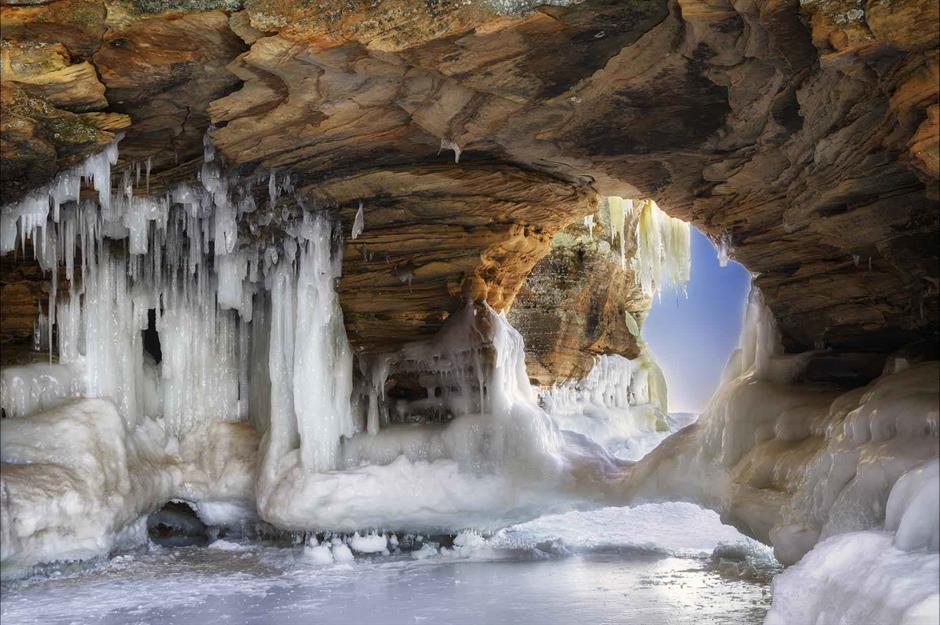
Salmon run, Alaska
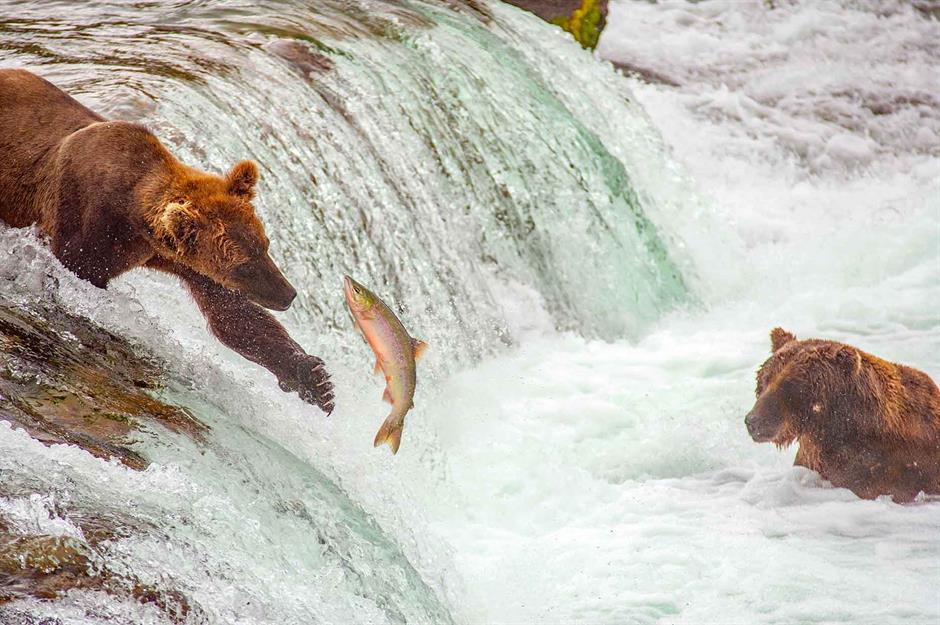
Night-blooming cactus, Arizona

Cereus, the collective name for a group of flower-producing cacti, open up to reveal their pretty white blossoms – but only for one night a year. This fleeting event usually takes place in May or June and is most prominent in Arizona’s botanical garden of Tohono Chul. Over 300 of these night-blooming plants are closely monitored so the brief phenomenon can be captured as it unfolds. In the wild, cereus can usually be found in Sonoran and Chihuahuan deserts, spreading into northern Mexico.
Bioluminescence in Mission Bay, San Diego, California
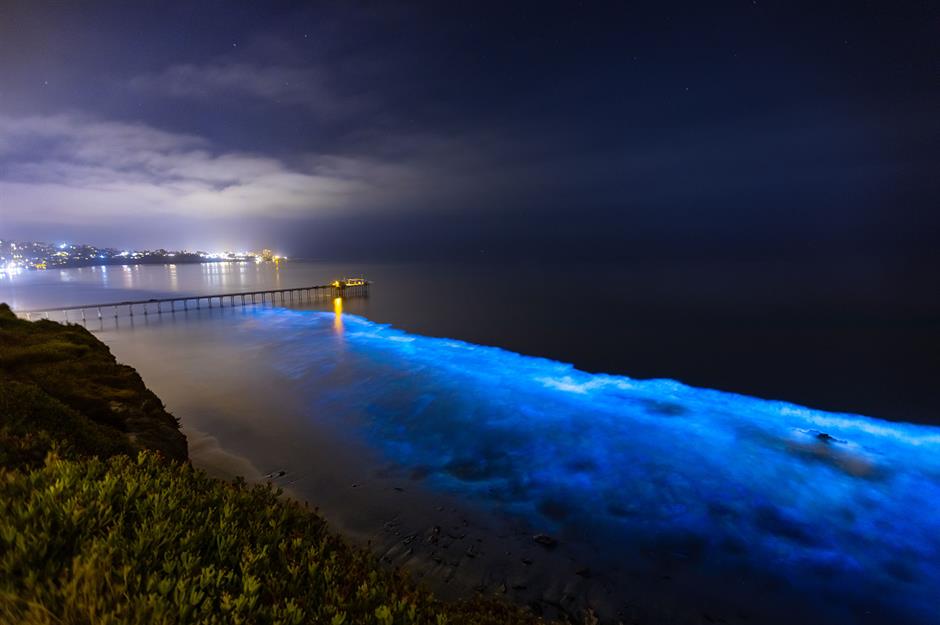
For a fleeting week, fortnight or month (scientists still can’t figure it out) between April and September, the beach waves of Solana Beach, Mission Bay (pictured here) and many more light up with bioluminescence. The glow comes from dinoflagellates, a type of algae that emits a red light during the day (the ‘red tide’) and neon blue come night. It's an ethereal and somewhat otherworldly sight to behold.
Red moon, western USA
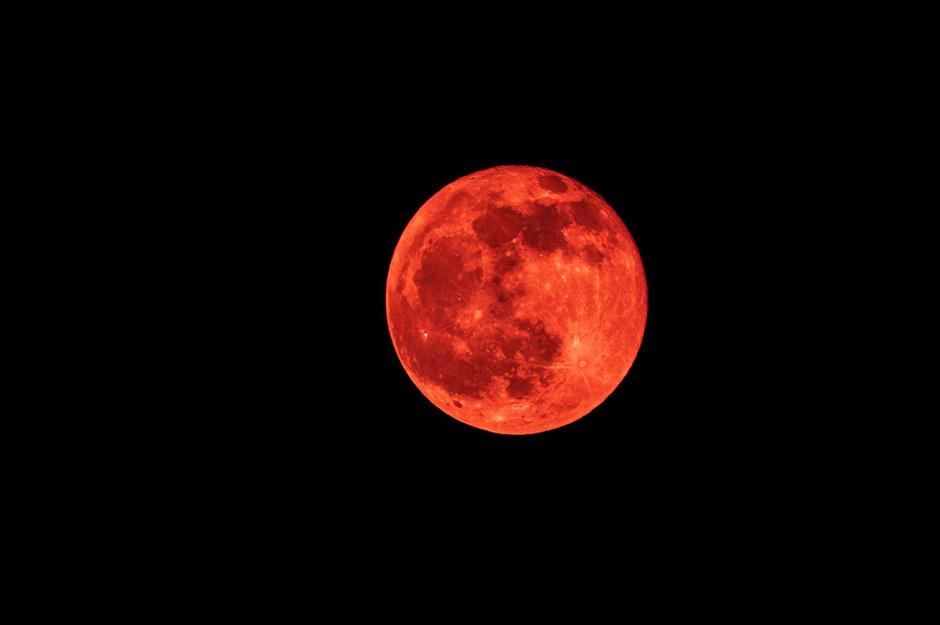
A red moon, also known as a blood moon, is a sight to behold. This ominous-looking display occurs during a total lunar eclipse – usually every May – when the red edge of the Earth’s shadow is reflected on the moon. That doesn’t stop it being surrounded by superstitions and prophecies though. Native American cultures believe that the sight of a red moon means it is crying out for care. Best observed from the western USA, Joshua Tree and Death Valley National Parks are top spots thanks to minimal light pollution.
Racetrack Playa, California
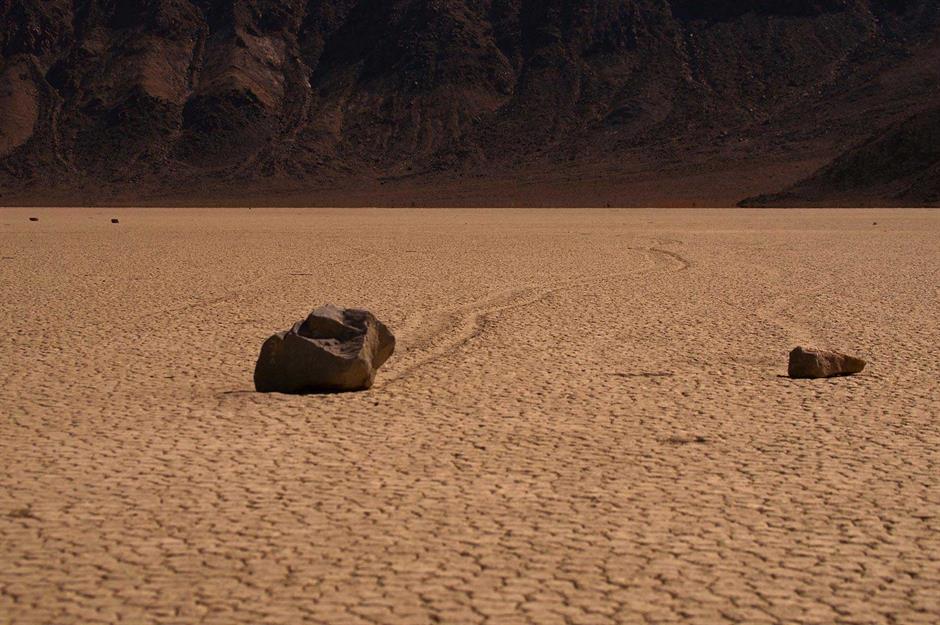
The eerie (yet explainable) Racetrack Playa in California sees boulders skid along the cracked, dry lakebed – seemingly of their own accord. The rocks range in size and can travel as far as 1,500 feet (457m). For centuries, people wondered how on earth (quite literally) they moved, but recent science suggests that it’s a combination of strong winds and slippery surfaces due to rainfall or ice. It’s still a hauntingly beautiful – albeit slightly odd – place to visit in Death Valley.
Northern lights, Idaho
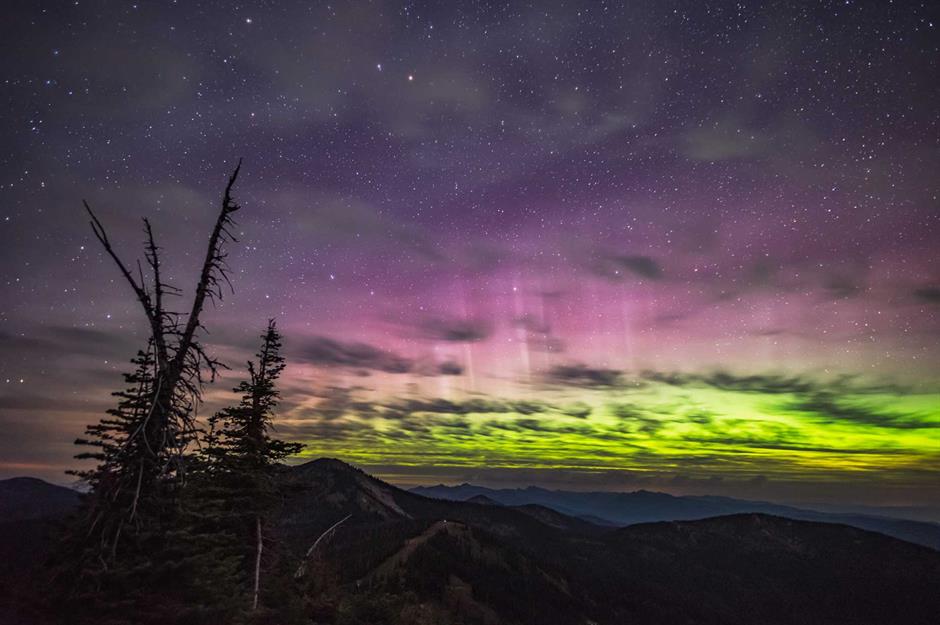
When it comes to the Northern Lights, people usually think of remote Iceland or some faraway Norwegian outpost, but Idaho is an unlikely contender to catch this natural light display. The best time to marvel at the sweeps of purple and green across the clear night skies is between late September and early March, with the best viewing spots including Heyburn State Park, Schweitzer Mountain Resort and Priest Lake.
Love this? Follow our Facebook page for more travel inspiration
Bombay Hook waterfowl gathering, Delaware

Over 150,000 northern pintail, American black ducks, green-winged teal, Canada geese and snow geese pass through Bombay Hook National Wildlife Refuge every October and November. The waterfowl stop off at this reserve on the Atlantic Flyway on the Delaware coast as they migrate between Canada and Mexico. This impressive site is one of the largest remaining stretches of tidal marsh in the mid-Atlantic; the reserve's walking trails and observation towers allow visitors to see the wildlife in their natural habitats.
Supercell storms in the Midwest
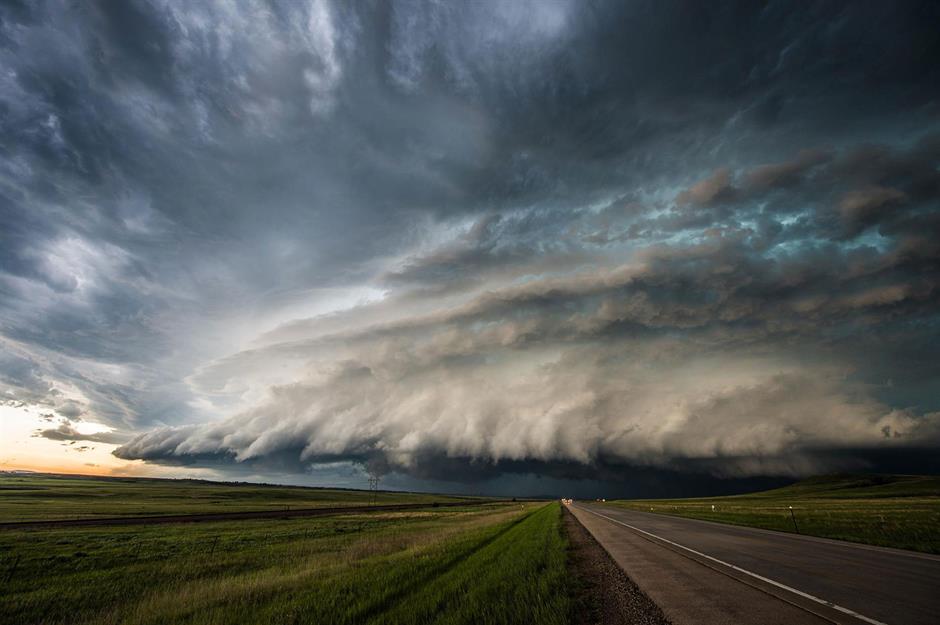
This humbling act of nature hits the Midwest from May to July, sweeping through the Midwest states of Kansas, Nebraska, North Dakota, South Dakota. The Midwest has seen five of the biggest storms of all time – the highest wind speed has been recorded at 300mph (134m/s). Although they can occur anywhere in the world, the Great Plains area in the USA – known as Tornado Alley – is particularly prone to them, so in-pursuit visitors are advised to book onto an organised tour.
Snow doughnuts in North Cascades National Park, Washington

Lenticular clouds at Lake Tahoe, California
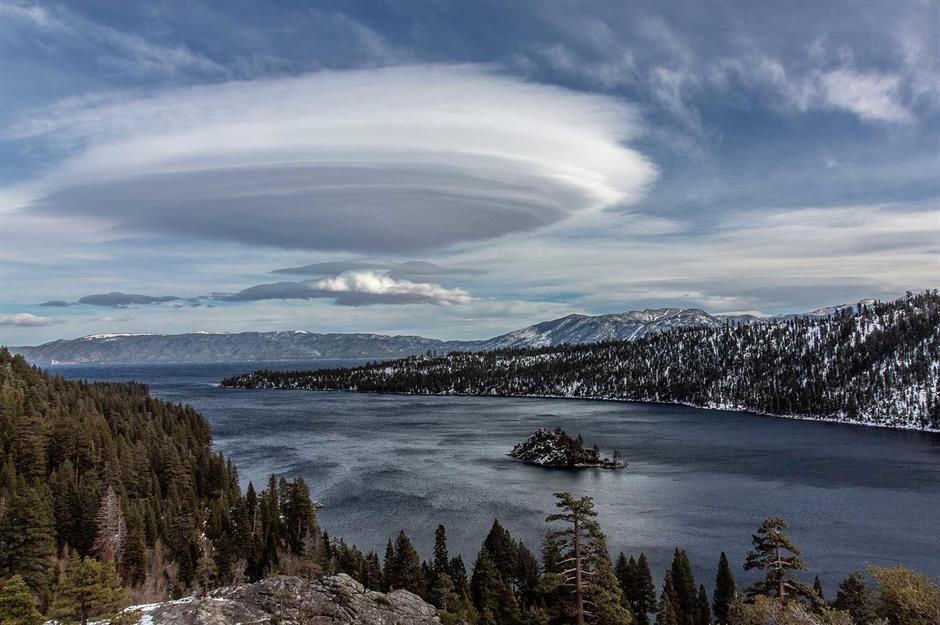
These lens-shaped clouds appear singular or stacked like pancakes that are one of a kind. Lenticular clouds are very unusual to other types in that they don’t move, and as such make them look a little like UFOs. They’re commonly found in mountainous regions such as Mount Shasta or over Lake Tahoe and tend to be avoided by pilots due to the heavy turbulence they’re prone to cause.
Autumn in Connecticut River Valley, Connecticut
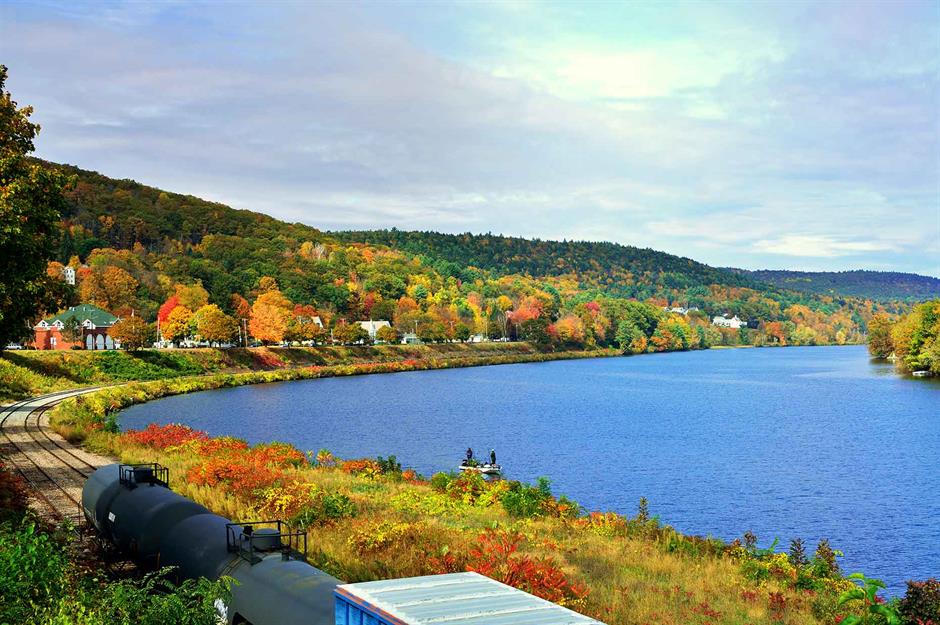
Every October, thousands of visitors make a beeline to Connecticut River Valley to witness the golden foliage that overwhelms this top leaf-peeping area. The Connecticut River winds through New England towards the Canadian border, with thick maple trees lining the riverbanks, sweeps of fallen leaves decorating the roads and watercolour-esque river reflections of the waning season to admire. Perched high overlooking the river, Gillette Castle State Park in Connecticut’s East Haddam offers sweeping vistas.
Haloes, Florida
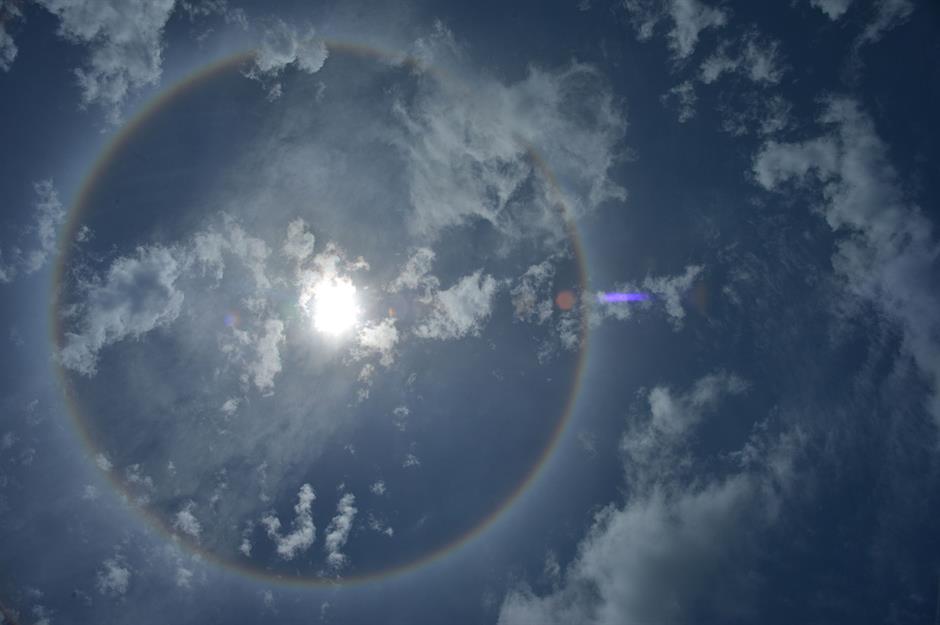
A sun halo, otherwise known as a sun dog, is a weather phenomenon that can be viewed across the US, including New Jersey, Florida and more. Suspended high in the lowest layer of the Earth’s atmosphere, sun haloes appear when ice crystals reflect sunlight, creating an illusion of a ring around the sun. Similarly, there are moon haloes. Both are visible year-round, but commonly occur before or following heavy rainfall or a snowstorm.
Manhattanhenge, New York City, New York
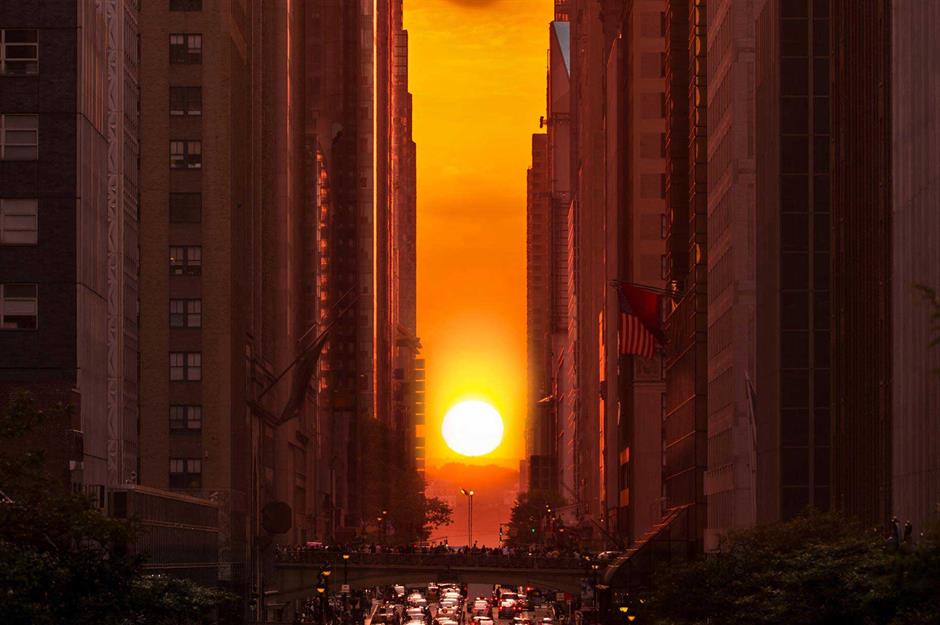
When you think of New York City, nature isn’t necessarily the first place you think of. But for two evenings in May and July, the sun sets straight between the city’s skyscraper canyons, bringing the natural and man-made worlds together for a truly spectacular moment. Manhattanhenge is named after England’s Stonehenge, with the best views to be enjoyed from 14th, 23rd, 34th, 42nd and 57th streets facing the west-northwest horizon. The next viewing opportunity will arrive around 29 May 2023 and then again in July.
Thor’s Well, Siuslaw National Forest, Oregon
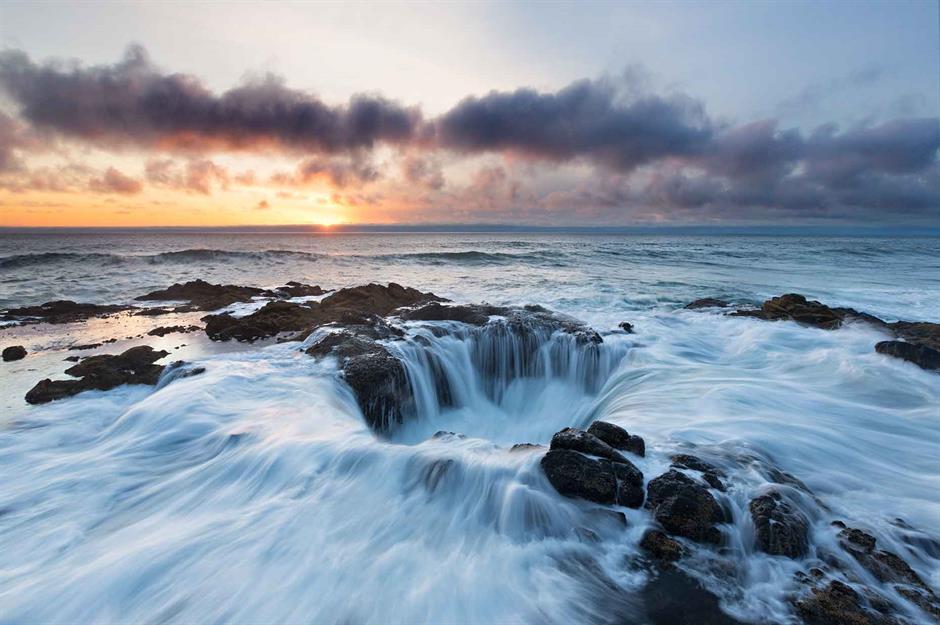
This beautiful, terrifying feat of nature has puzzled people for years. It’s thought that Thor’s Well could have formed from a collapsed sea cave, but nobody knows for sure. This gaping phenomenon is located off the coast of Cape Perpetua in Oregon’s Siuslaw National Forest. Seawater gushes into the well-like centre, which occasionally erupts like a geyser, and is surrounded by sharp rocks and boisterous waves – best not to get too close.
Pacific walrus migration, Bering and Chukchi seas, Alaska

Over spring and summer, thousands of Pacific walruses take to the seas between Alaska and eastern Siberia. In April, as the sea ice recedes, female walruses and their young head north from the Bering Sea towards Chukchi Sea. Most males migrate to island hangouts on Bristol Bay off the west coast of Alaska, where they forage for food and rest (as pictured here). In early October, the female walruses return south while the males head north to meet in the waters near St. Lawrence for mating season.
Fire whirls in Great Dismal Swamp National Wildlife Refuge, Virginia
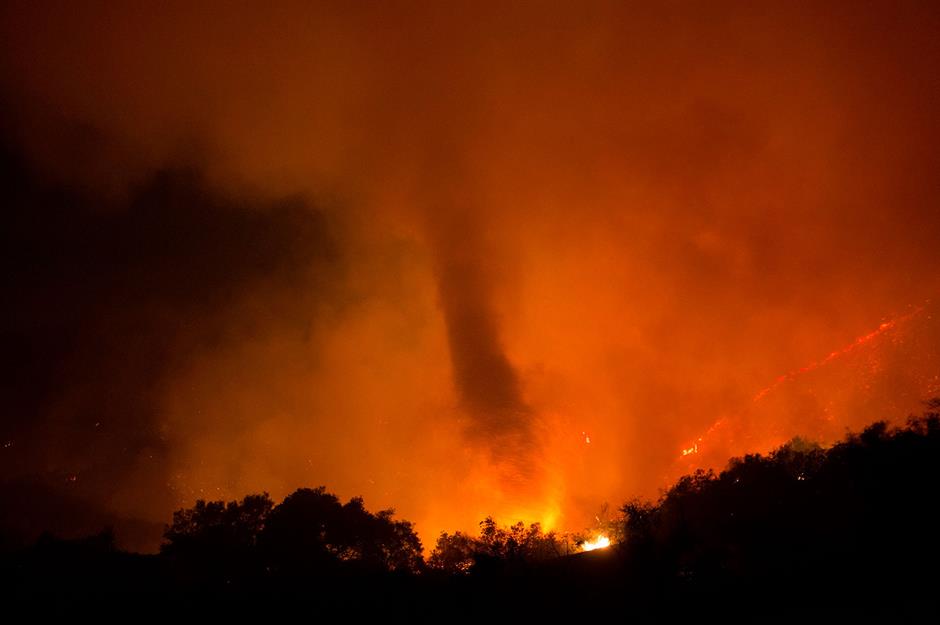
This terrifying tower of flames may only last a few minutes, but in that time it can bring a lot of destruction with it. Fire tornadoes are caused by forest and bush fires or extreme droughts, when fire is whipped up by strong, dry air. The hotter summer months (June to September) are prone to fire whirls at the likes of Virginia’s Great Dismal Swamp National Wildlife Refuge and California.
Cherry blossoms in Washington DC

Super flower red moon, Hawaii
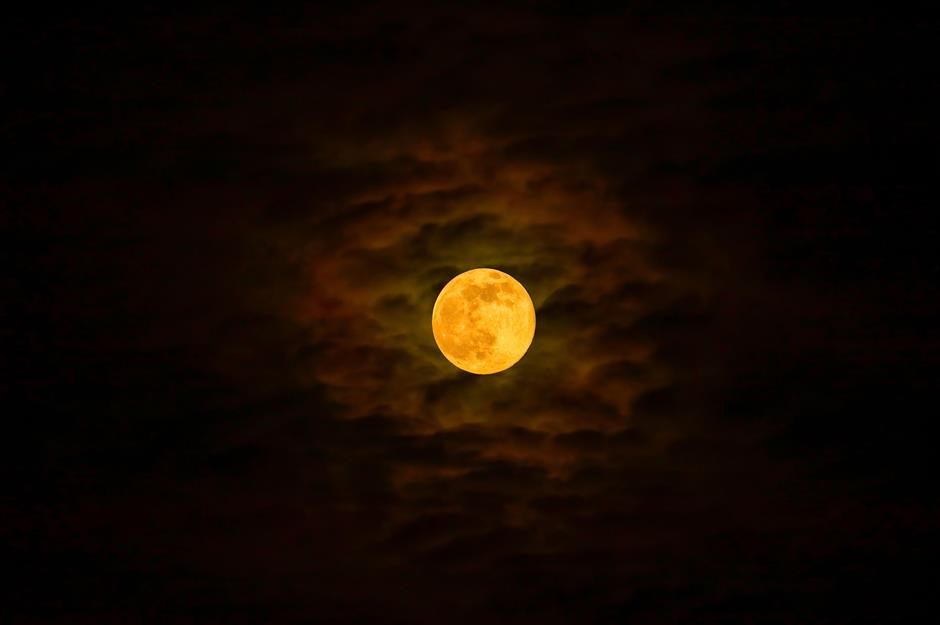
Blue whale migration near San Diego, California
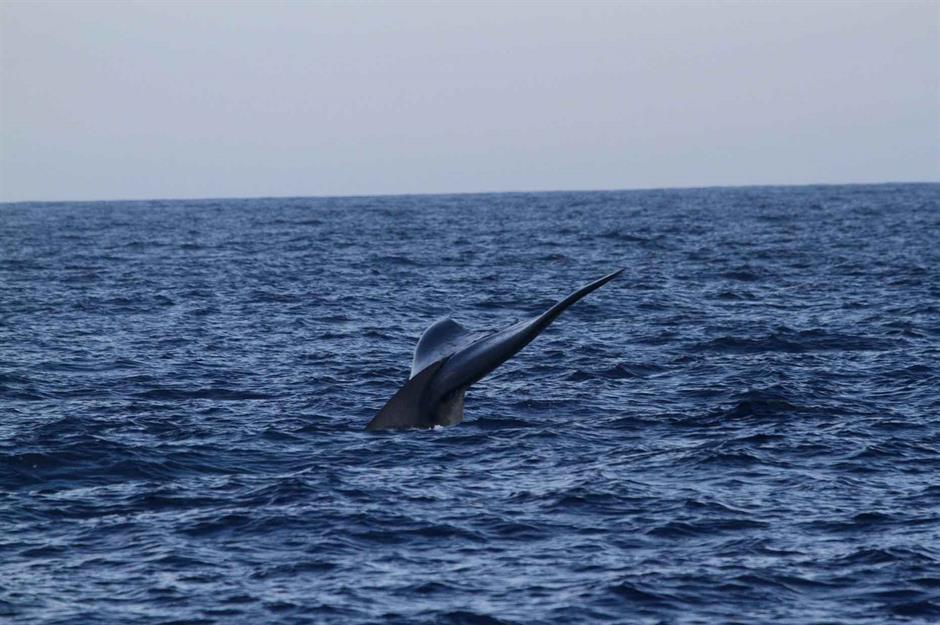
Kilauea eruptions, Hawaii

This active volcano is in a near-constant state of eruption. It’s technically still experiencing one of the longest eruptions in known history, having started back in 1983. Kilauea has spewed some 550 acres of molten lava which has formed new land. The active site is situated in Hawaii Volcanoes National Park along with Mauna Loa, the world’s largest volcano at 30,000 feet (9,144m) high. It’s best to visit until night-time, when the lava stream appears luminated against the pitch-black landscape.
Find out more about Mother Nature at its most beautiful (and terrifying)
Loggerhead sea turtles nesting season in Palm Beaches, Florida

Florida’s Palm Beaches is a returning nesting spot for thousands of loggerhead, green and leatherback sea turtles. They rely on the Earth’s magnetic fields to bring them to one of the world’s most densely populated beaches for sea turtles. The nesting season runs between May and October where roughly 110 eggs per nest are laid. While 2021 saw fewer loggerheads, there was an increase in green and leatherback turtles, which was partly achieved by the town’s rigorous ‘lights out’ rule at night time.
Native wildflowers in Crested Butte, Colorado

The Wildflower Capital of Colorado is home to dazzling nature all year round, with the Rocky Mountains dutifully serving as a picturesque backdrop, but spring is arguably the best season to visit for Mother Nature at its most vibrant. May to early June is blanketed with yellow marsh marigolds and droplets of red columbine; late June to July blooms with blood-red Indian paintbrush and burnt orange sneezeweed and July to early September offers carpets of native Rocky Mountain penstemon and clusters of cow parsnip.
Mexican free-tailed bat colony in San Antonio, Texas

Located on the northern outskirts of San Antonio is Bracken Cave, home to over 15 million Mexican free-tailed bats. The world’s largest bat colony is an integral site for females to give birth and rear their young and they consume over a hundred tonnes of corn earworm moths every summer evening. Visitors (who must be members of Bat Conservation International) can see it for themselves on guided visits during early spring and summer.
Spring blooms in Portland, Oregon
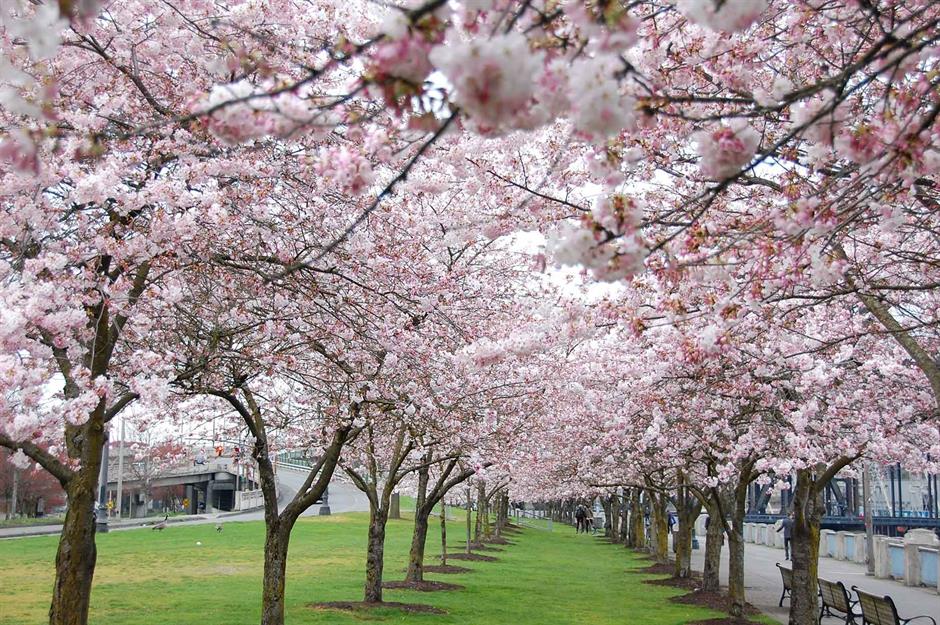
Northern Lights, Minnesota

Minnesota is another great spot to watch the Northern Lights in the US. Voyageurs National Park sits at the northeastern border of Canada and thanks to its vast outdoor space, tall mountain peaks and high waterfalls, there’s plenty of celestial activity to observe between late autumn and early spring. But this isn’t the only dark sky delight the North Star State has to offer. It’s also possible to catch sight of the Perseid meteor shower between mid-July and mid-August, followed by the Leonid shower in November.
Autumn foliage in Stowe, Vermont
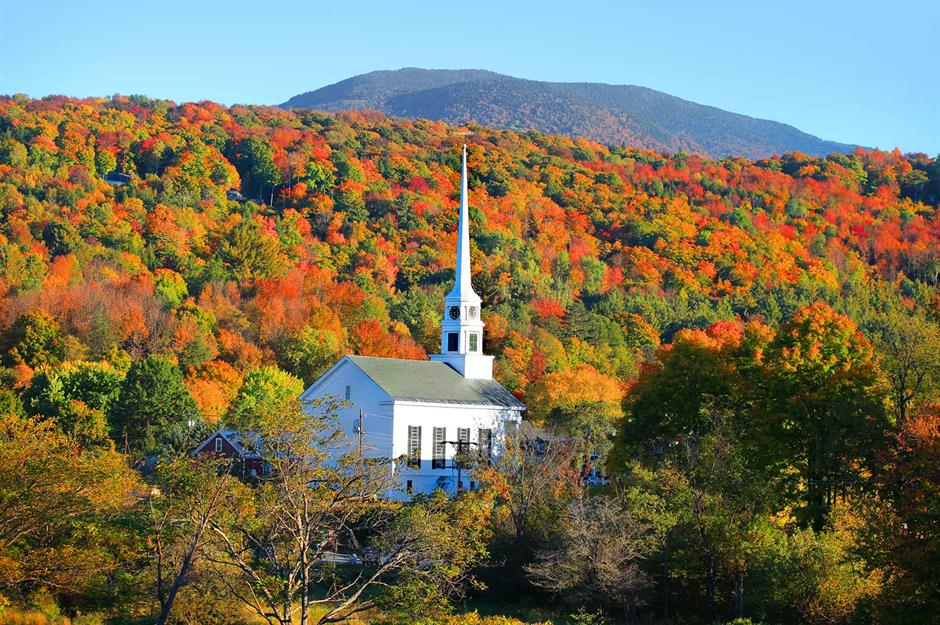
September and October in northern Vermont is the stuff of autumnal dreams. Stowe is regularly voted as the Fall Colour Capital of the US for good reason. September to mid-October is the small window when ruby, crimson and gold-coloured foliage transforms the town, with different elevations bringing different coverage times – higher points like Mount Mansfield see an earlier coverage. A scenic self-guided drive is the best way to take in the maples, birch, elm, poplar, hickory and redbuds of this charming town.
The freezing of Niagara Falls, New York and Ontario

There’s no missing the staggering Niagara Falls on the border between New York and the Canadian Province of Ontario. The three mighty waterfalls are at their most awe-inspiring during winter, when temperatures can plummet as low as -25°C (-13°F). Not only do the sheets of water transform into breathtaking ice formations but the surrounding area is blanketed in thick snow, fulfilling all our winter wonderland fairy tales.
Discover the most wonderful views on Earth
Moonbow at Cumberland Falls, Kentucky
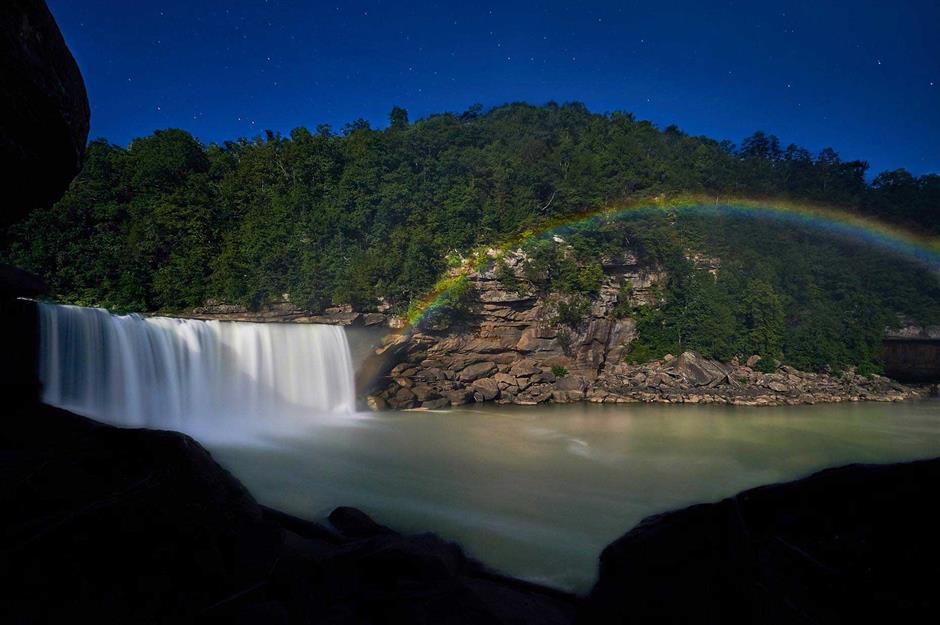
Mammatus clouds, Nebraska
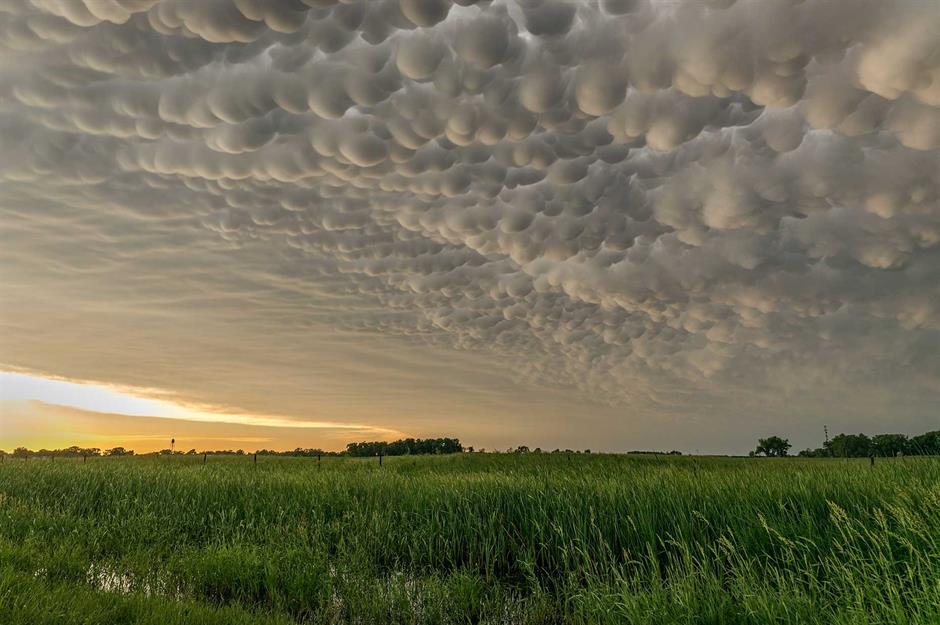
Shadow of the Bear, North Carolina
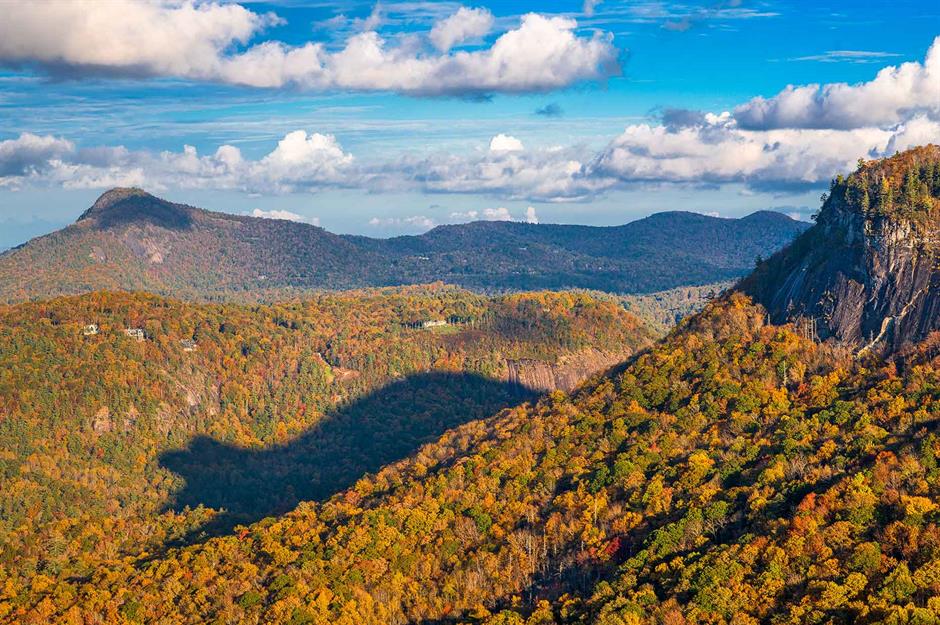
As the autumn and winter sun sets behind the 4,930-foot-tall (1,503m) Whiteside Mountain, a bear-shaped shadow appears on the mountainside. The transcendent Shadow of the Bear is visible every day between 5.30pm and 6.15pm from mid-October to early November and mid-February to early March. This uncanny sight can be seen near the village of Cashiers in Jackson County, with the best vantage point from Rhodes Big View Overlook – which also doubles up as a great spot for admiring the surrounding autumnal foliage.
Horsetail Fall firefall in Yosemite National Park, California
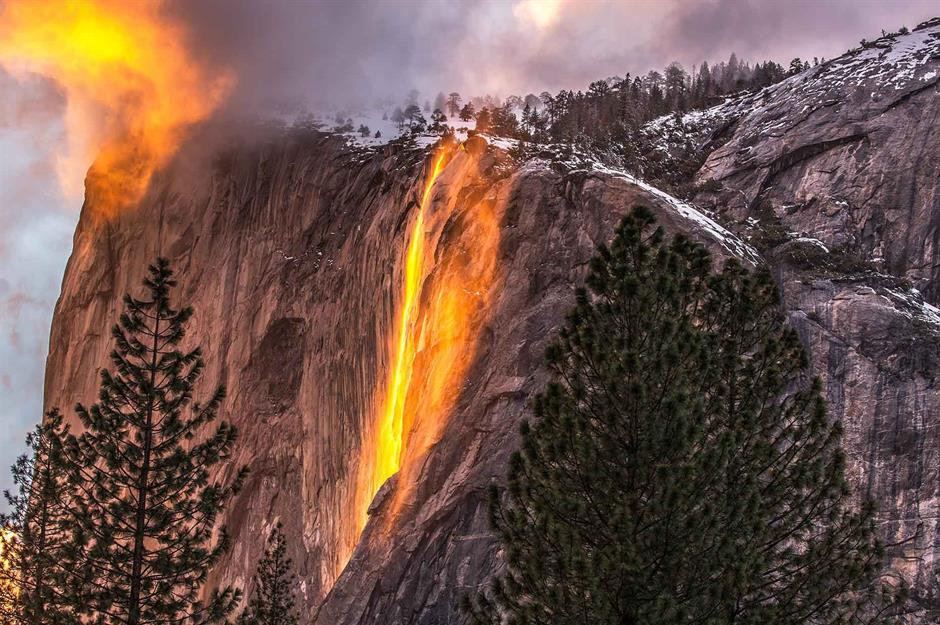
The natural spectacle of Horsetail Fall comes in two parts. First, the 3,280-foot-high (1,000m) waterfall only flows down the east face of El Capitan, a vast rock formation in California’s Yosemite National Park, during winter and early spring. Then, come mid-to-late February, thousands of visitors flock to the site when the ‘firefall’ occurs. It looks unbelievable, like a strip of free-flowing lava, but it’s actually the setting sun tilting at just the right angle, transforming the water’s colour for all of ten minutes.
Kitch-iti-kipi Springs, Michigan

Green Flash, Hawaii
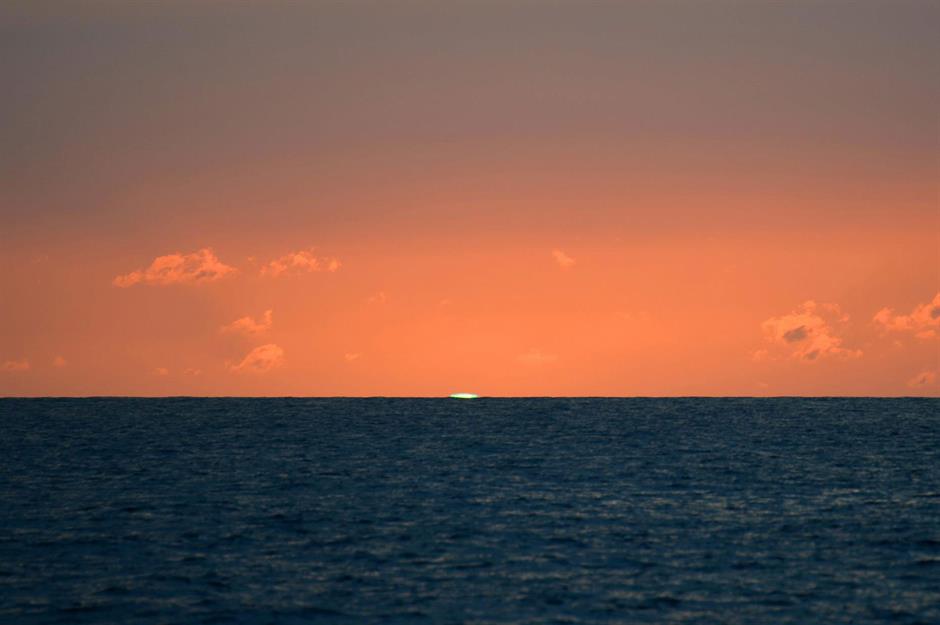
This optical illusion occurs before sunset or after sunrise and appears as a green spot above the sun. From 5.30pm to 7pm are the best times to try and see it, but best be quick, as it's gone in – well, a flash. It’s caused by light refracting in the atmosphere but you’ll need a clear view of a distant horizon on a clear day, making the Aloha State an ideal location. Film fans might recognise this phenomenon from Pirates of the Caribbean: At World's End.
Spring wildflowers in Antelope Valley, California

Fire rainbows, West Virginia
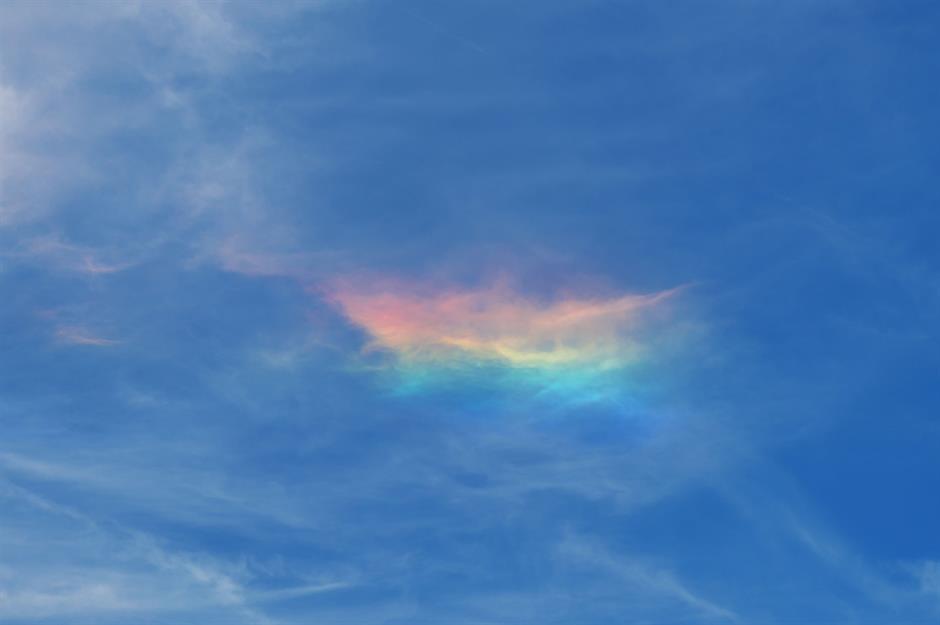
Frozen waterfalls in Starved Rock State Park, Illinois
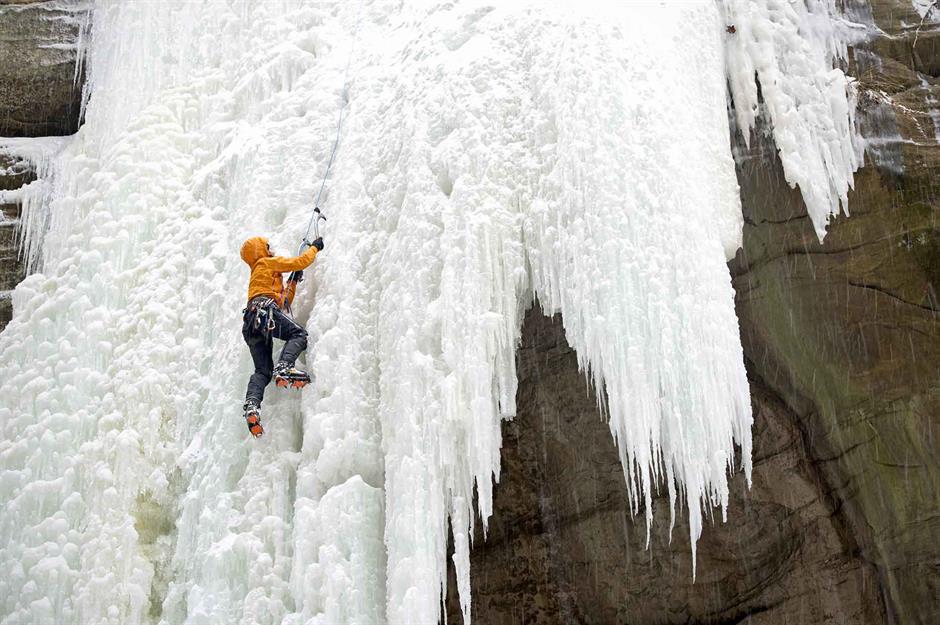
The frozen waterfalls of Starved Rock State Park in northern Illinois is like looking at a photograph. During the winter months, the falls, which range between 15-80 feet (5m-24m) high, form into dripping icicles, frozen-over creek beds and cascades that appear suspended in time. The French Canyon ice fall is closest to the visitor centre, while slightly further out are Wildcat Canyon, Ottawa Canyon and St. Louis Canyon ice falls, plus more. There’s an extra sprinkling of winter nature between late December and March when bald eagles flock to the park.
Chicagohenge, Chicago, Illinois
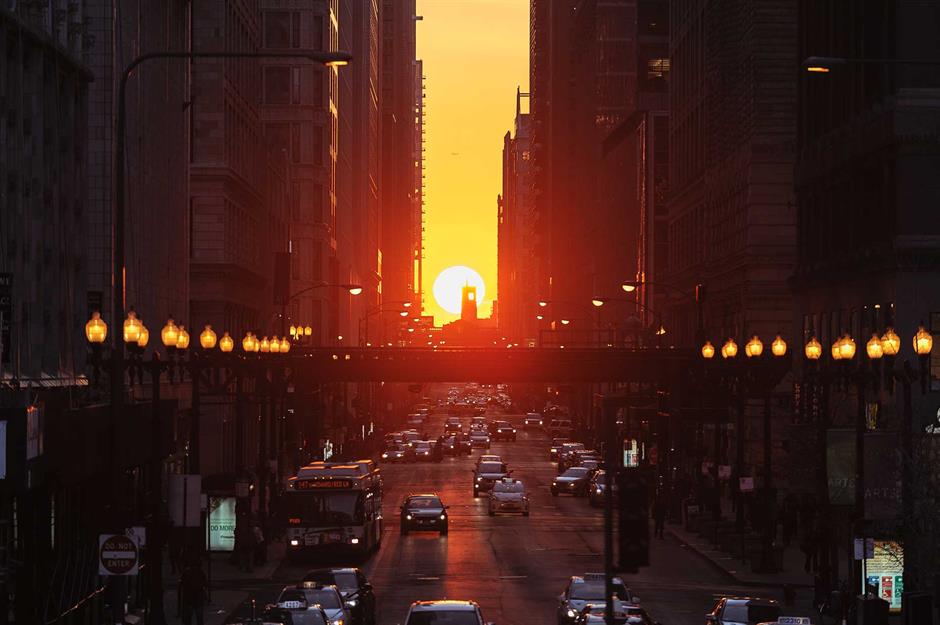
Thanks to its grid layout, allowing the sun to align with the east-west oriented streets, Chicagohenge is another man-made-meets-Mother-Nature combo. What is usually a fast-paced city slows down for this special solstice, which falls around the end of September from 6.30pm onwards – Madison and Kenzie streets are particularly good spots to watch the spectacle. In 2023 the date is set for 23 September and will occur around 6:30pm.
Now take a look at more of the world's most beautiful waterfalls
Comments
Be the first to comment
Do you want to comment on this article? You need to be signed in for this feature
Most Popular
Destinations The Seven Wonders of the Ancient World, rebuilt